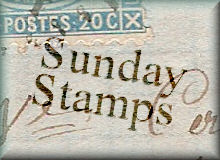
This postcard shows what are apparently employees in front of the Gile Letter Service storefront at 723 Third Ave. S., Minneapolis, Minnesota. The vehicle in the center looks like it could be an early horseless carriage that could have been used by the company in parades.
The postcard has an unused Minnesota Statehood stamp on the back. The 3¢ Minnesota Statehood stamp was issued on May 11, 1958. Postage rates increased on August 1, 1958. The letter rate was raised to 4¢ and the postcard rate was increased to 3¢, which suggests that the card dates from about 1958. The stamp would have been used for letter postage when first issued, but a few months later 3¢ was only enough postage for a postcard.

Below is an interior photo of Gile Letter Service Mailroom dated 1957 from the
Minnesota Historical Society. The MNHS Database also has a photo of the storefront.

Further searching online turned up a first day cover published by Gile Letter Service with the Minnesota Statehoood stamp.














































